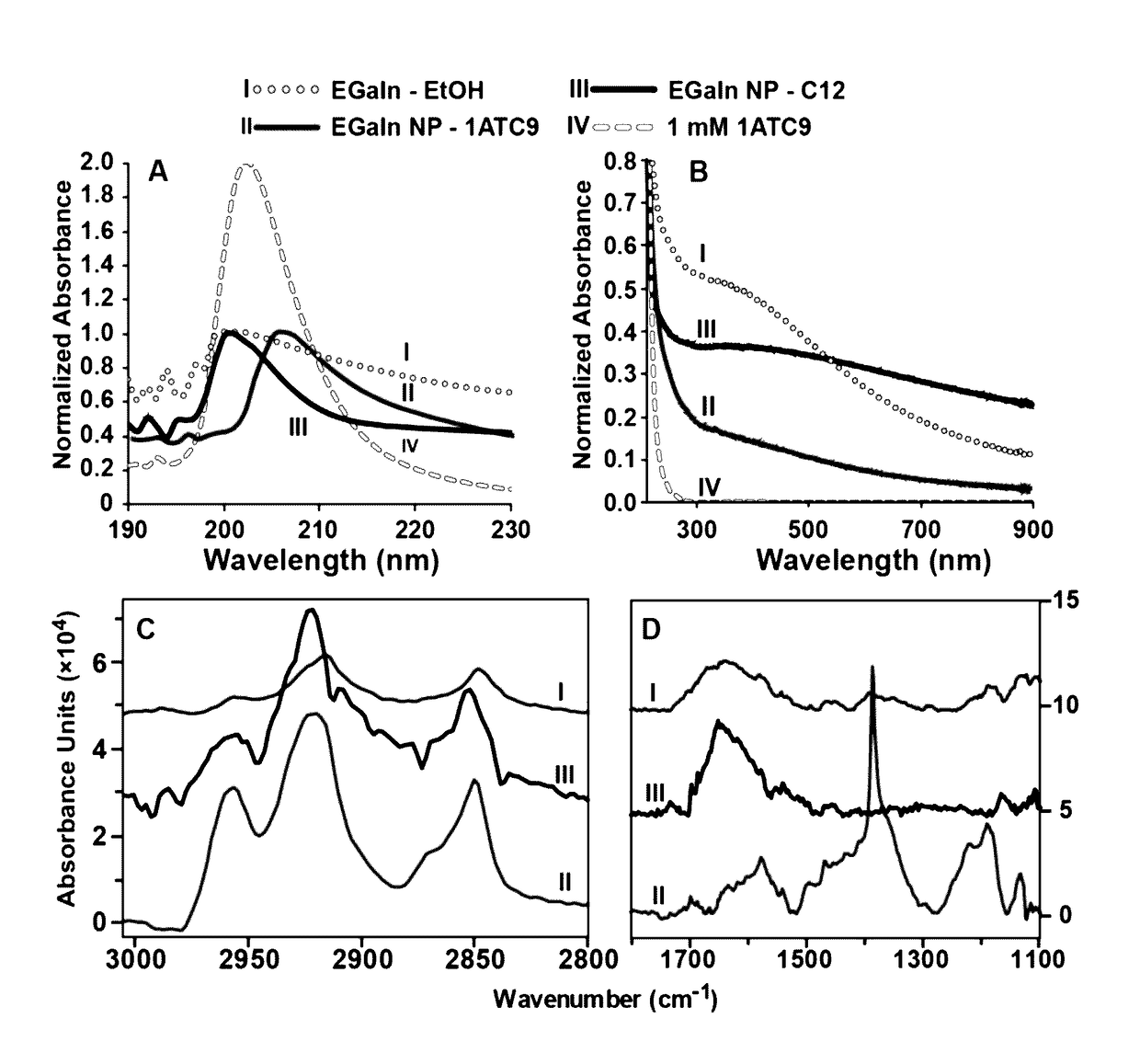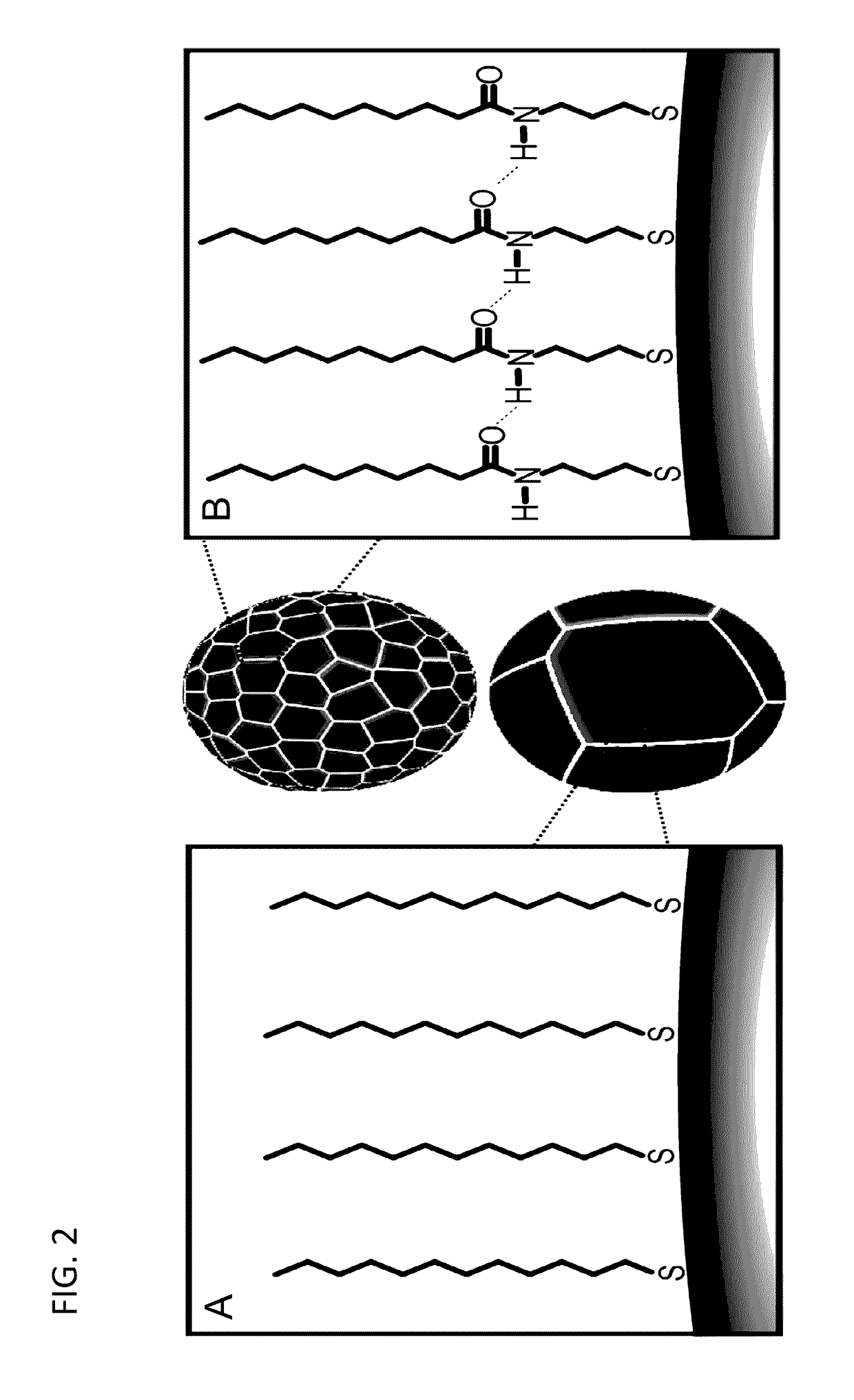Metal alloy nanoparticle synthesis via self-assembled monolayer formation and ultrasound
a technology of metal alloy nanoparticles and monolayers, applied in chemical/physical processes, transportation and packaging, chemical apparatuses and processes, etc., can solve the problems of limited composition range and product uniformity, and the synthesis of alloy nanoparticles is considerably more difficult. to achieve the effect of reducing the size of the nanoparticles
- Summary
- Abstract
- Description
- Claims
- Application Information
AI Technical Summary
Benefits of technology
Problems solved by technology
Method used
Image
Examples
Embodiment Construction
[0035]Turning now to the drawings, systems and methods for the facile self-assembly monolayer formation of ultrasonically dispersed liquid-phase metal alloy nanoparticles are described. Self-assembly has unmatched potential as a universal design principle for the development of new materials and technologies. (See, e.g. P. Wender et al., Nature 469, 23 (2011), the disclosure of which is incorporated herein by reference.) One example of useful self-assembly is the fast, spontaneous formation of self-assembled monolayers (SAMs) of amphiphilic molecules on bulk and nanoparticle surfaces has used to exert interfacial control. The molecules or ligands for such applications typically possess a surface anchoring functionality, such as sulfur with its high affinity for noble metals, at one end, and any other moiety of interest at the other end of any desired linker and can be chosen to produce specific chemical, physical, or mechanical properties in the formed surfaces. (See, e.g., J. C. Lo...
PUM
| Property | Measurement | Unit |
|---|---|---|
| size | aaaaa | aaaaa |
| volume | aaaaa | aaaaa |
| pore size | aaaaa | aaaaa |
Abstract
Description
Claims
Application Information
 Login to View More
Login to View More - R&D
- Intellectual Property
- Life Sciences
- Materials
- Tech Scout
- Unparalleled Data Quality
- Higher Quality Content
- 60% Fewer Hallucinations
Browse by: Latest US Patents, China's latest patents, Technical Efficacy Thesaurus, Application Domain, Technology Topic, Popular Technical Reports.
© 2025 PatSnap. All rights reserved.Legal|Privacy policy|Modern Slavery Act Transparency Statement|Sitemap|About US| Contact US: help@patsnap.com



